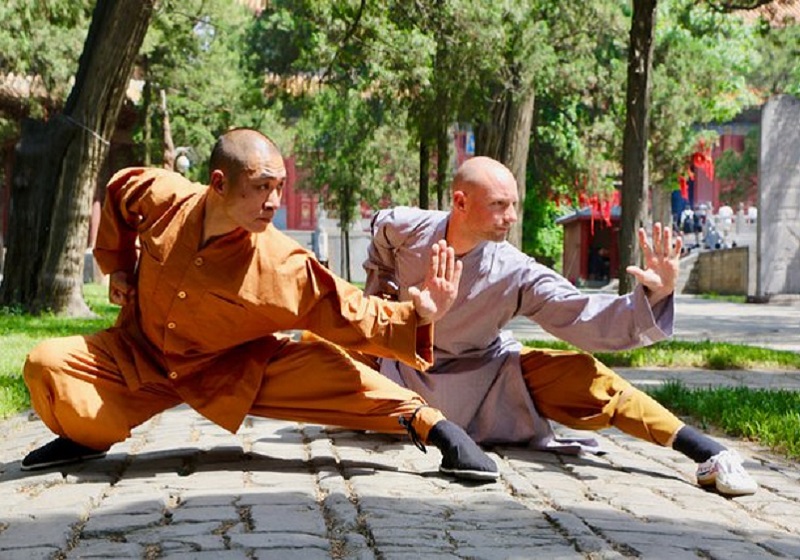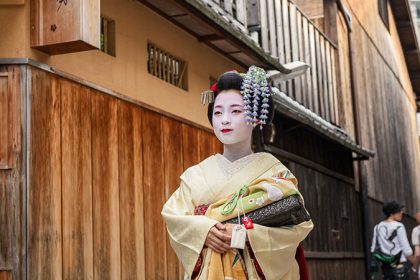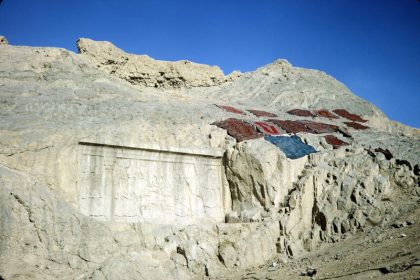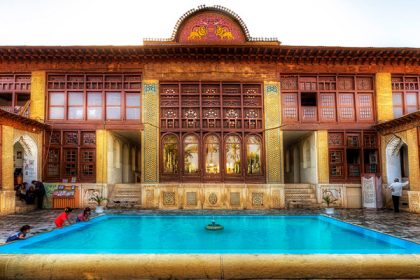The Shaolin Temple is one of the most famous Buddhist temples in China, known as the birthplace of martial arts such as Kung Fu.
The Shaolin Temple has long been a lot of events and events and has cultivated martial arts and fighters. The principles and techniques of martial arts are long -standing in the world, and today, despite the changes in war, military and strategy techniques, many people in the world of learning and skills in this field believe that combat science besides defense use, health and length. Life becomes the relationship of the soul to the body and the relationship between the soul and the body to nature. In addition, the Shaolin Temple is also a religious place for the Buddhist religion and the religion of Zen Buddhism.
Meet the Temple of Shaolin:
Where is the Shaolin Temple?
- Address: China, Henan Province, Jangzhou City, Dengfong City, Songshan Mountain, Shaolin Temple
The Shaolin Temple is located in the heart of the Songshan Mountain, which is known as one of the five holy mountains of China. The area around the temple is pristine and unique and is not only for training, but for practicing meditation and buddhism. The city of Dangfang, where the temple is located, is known as the Center for Zen Buddhism and Martial Arts in China. In fact, the location of the Shaolin Temple has long played a key role in its fame and cultural status.
Photo Source: learn-shaolinkungfu.com; Photographer: Unknown
About the Shaolin Temple
The Shaolin Temple is a religious building in which, in addition to performing the Buddhist rituals, they also teach martial arts. Some of the martial arts taught in this temple include Kung Fu, Tai Chi Chuan, San Da, Chi Kong and …
These arts have been developed not only for self -defense but also to balance the mind and body. The monks of this temple believe that martial arts are not valuable without spiritual consciousness, and therefore their martial arts are intertwined with Buddhist philosophy. At this school, every martial movement is a symbol of harmony with nature. The most famous martial arts art is Kung Fu Shawulin, founded in this temple and is one of the most important cultural heritage of this place. The movements of Kung Fu Shaolin are inspired by nature and animals. Styles such as tigers, Dorna, snakes, monkeys and leopards in this field of martial arts are a symbol of environmental harmony. This martial art is a combination of physical exercises, symbolic movements, and meditation designed not only for the struggle, but also to reinforce “chi” or inner energy.

Photo Source: Tripsavvy.com; Photographer: Oleksiy Maksymenko
In addition to martial arts, the Shaolin Temple plays an important role in promoting the philosophy of “Zen Buddhism” in East Asia. Every student who enters the temple first learns the philosophical principles of Zen. This philosophy emphasizes the importance of the moment and full focus on what is happening now. From this place, Zen’s philosophy has spread to Japan, Korea and other parts of the world and has had a profound impact on art, literature and even war methods in these areas. The temple is located in a wide area and includes various sections, including prayer halls, martial arts, Buddhist gardens and monk tombs. One of the prominent aspects of the temple is architecture that is influenced by Chinese traditions. The roofs of the role, the huge columns with symbolic engravings and the Buddhist statues represent the historical and spiritual splendor of this place. This monument is now part of the world’s cultural heritage.
Shaolin Temple History
The history of the Shaolin Temple includes the political, cultural and religious change of China. The temple was built in the year 9 during the Northern Wei Dynasty dynasty on the orders of the Emperor Wen Van of the Northern Wei. The main purpose of the temple was to host an Indian monk named Batuo, who had traveled to China to expand the Buddhist religion. A few decades after the construction of the temple, another monk, Bodhidharma, came from India to the temple. He introduced a new style of meditation and physical training that later became one of the foundations of Kung Fu Sowolin. Buddhism also helped develop and expand the Zen Buddhist school in China by combining the philosophy of Buddhism and physical training.

The old painting of the struggle at the Shaolin Temple; Photo Source: Theetaichinotebook.com; Designer: Unknown
In later periods, the Shaolin Temple faced a lot of threats. In the years 1 to 2, the temple became very popular with the Tang dynasty period; Because its monks rushed to a battle with the help of Li Shimin, which was later known as the Emperor Taizong. This support has led to special privileges, including agricultural land, to the temple and increase its boom. During the Ming and Qing dynasties, the temple was targeted by military attacks due to the political roles of monks and rebellion against the government. In the year 9, a command called Shi Ysan set fire to the temple and destroyed many valuable manuscripts, monuments and manuscripts.
One of the milestones of the history of the temple was in the early twentieth century. Prior to this period of the Shaolin Temple, he had suffered a lot due to the civil wars; But since the 1980s, especially with the making of martial arts about the temple, its fame increased worldwide, and the Chinese government made a lot of investments to rebuild and preserve this historic site. These films not only showed stories of monks’ physical power, but also emphasized the spiritual and philosophical aspect of the temple.

Old photo of the Shaolin Temple at 1; Photo Source: shaolin-monasttery.blogspot.com; Photographer: Unknown
Despite all these ups and downs, the Shaolin Temple has been rebuilt, restored and maintained every time and has always remained a symbol of cultural and spiritual resistance in China and the world. Today, the temple works as a sacred place for Buddhism, a school for warriors and an attractive and spectacular destination for tourists.
Shaolin Temple Master
One of the greatest teachers of the Shaolin Temple was the Buddhist who traveled to China in the year 9 and developed and developed the Zen Buddhist school. Buddhism also practiced physical exercises when meditating on the cave, to maintain physical health and prevent its muscles from weakening. When he entered the temple, he found that the monks did not care much about their physical health. Finally, he provided a set of sports exercises that formed the basis of Shaolin’s martial arts; Martial Arts had also expanded in China before Damma, and many of the temple monks were actually retired soldiers. Finally, the existing martial arts were merged with the teachings of Buddhism and formed Kung Fui Shaolin. He is known as the founder of Zen Buddhism and the developer of martial arts in the Shaolin Temple.
Alongside Buddhist, other professors have also played a key role in the education and development of martial arts. These professors usually pursued a simple and spiritual life and encouraged their students to focus and harmony between the body and the mind. The interesting thing is that Shaolin professors have been able to convey their secrets to specific students for many years; This has made the temple a mysterious center in the world.

Photo Source: shaolinTemplehenan; Photographer: Unknown
Secrets of the Shaolin Temple
Physical exercises, Shaolin martial arts, Zen Buddhism, meditation and mind control techniques are the main secrets of the Shaolin Temple that the monks have protected for centuries and transferred to specific students.
The monks of the Shaolin Temple have great skills in martial arts. They are trained in four areas and consider working with 4 weapons with special arms. What surprises tourists and visitors is the superhero’s superhero. They can break the coarse stones with an empty hand, lift heavy objects with an empty hand, penetrate their fingers, or sit only on one finger or spear; Without the injury. Their intense mental focus and high physical strength are the result of years of meditation and physical exercise. They start their day with respiratory exercises and meditation early in the morning and then do physical exercises. The monks perform in physical exercises, acrobatic movements, training with cold weapons, simulated struggles, and so on.

Photo Source: SCMP.com; Photographer: Unknown
One of the monks of the Shaolin Temple is the Qigong, which is based on the principles of “Chi”. Chikong is a way to enhance internal energy and self -control. In addition to martial arts, health and longevity, these training also gives the temple students.
Another mysterious feature of the monks and the experts of this temple is the control of the mind against stress, fear and pain. They can also repair the severe injuries caused by the principles of “Chi”. To achieve this level of focus, they medit down, walk on fire, tolerate heavy weight on their bodies, and exercise to maximize their body and psyche. In this temple, the healing properties of medicinal herbs and traditional Chinese medicine are also taught to the monks and students to use it to reinforce and help others.

Photo Source: shaolintemple.com; Photographer: Unknown
Conditions of entry into the Shaolin Temple
Although the temple was initially only dedicated to monks and students and other people were not allowed to enter it, tourists are now available today. Visitors must get tickets to enter the temple and then enter the main gate. Those who intend to learn martial arts must pre -register and participate in regular programs. The monks accept only students who have strong will and commitment.

The monks of the Shaolin Temple; Photo Source: Wiki Media; Photographer: naoshol
The fee received from the students who come to the temple for training and the income from the sale of tickets is spent on repair, rebuilding, restoring and maintaining the temple.
- Shaolin Temple Hours: Every day from 9 am to 6:30 pm
- The entry fee of the Shaolin Temple (1): ۱۰۰ yuan
The cost of training in the Shaolin Temple
Training in the Shaolin Temple has costs that vary depending on the period of course and type of education. Costs usually include martial arts, housing and simple meals. For example, in medium term, the cost of accommodation is derived from the applicant, and in long -term courses, annual tuition and cost of living in the temple are received.
There are some educational schools near the temple that are less expensive and are more suitable for people with limited budget. You can visit the Shaolin Temple website for detailed information on the cost of martial arts, meditation and learning the principles.
Different parts of the Shaolin Temple
The Shaolin Temple consists of three main sections that tourists visit, respectively.
Martial Arts
Martial Arts Hall is performed in the Martial Arts Hall. After crossing a magnificent hall surrounded by flashy lights, historical sculptures and martial arts, tourists arrive at a hall in which monks exhibit martial arts and shows with a variety of cold weapons. In this place, the martial arts of the young students and their skill and focus are amazing. In the early hours of the morning, the hall is full of students from different countries and in the category of different ages.

Photo Source: ualberta.ca; Photographer: Unknown
Shaolin Temple
After crossing the martial arts hall, tourists reach the Shaolin Temple for 1 to 2 minutes. The temple building is located at the top of the mountain and visitors can enter the entrance at the bottom of the mountain and reach the top of the temple after crossing the halls. The Buddhist ceremony is also held at the highest hall.
Pagoda Forest
The third part is the Pagoda Forest, which tourists reach the half -kilometer wooden route. The forest covers an area of about 2.5 square meters and has 2 stones and bricks, which are built from 1 to 2 years. Some say that these Pagodas are the tomb of the prominent monks of the temple, and some say that the burial of ashes is important people of Chinese dynasties and families built to keep their memory alive. Pagodas are tall, multilayer structures found in Thailand, Bali and India.

Pagoda Forest of Shaolin Temple; Photo Source: chinatoptrip.com; Photographer: Unknown
Shaolin Temple in the Cinema
If you are interested in learning more about the Shaolin Temple and the style and principles of martial arts training in this place, we suggest watching these movies:
- The Thirty -sixth of the Shaolin Room (The 36th Chamber of Shaolin); Product of Year 2
- Eight -headed spear (The 8 Diagram Pole Fighter); Product Year 2
- New Shaolin Temple (New Shaolin Temple); Product Year 2
- Shaolin Temple (Shaolin Temple); Product of Year 2
- Four Avengers (The Four Assassins); Product of Year 2
You can also see the following documentaries:
- Shaolin Temple; Constructed
- Documentary of Shaolin’s monks’ exercises to reach a professor
- Kung Fu Shaolin Documentary

The film of a fighter with an eight -headed spear; Photo Source: moma.org; Photographer: Unknown
Are you interested in martial arts? Do you think what is said about the monks of the Shaolin Temple? If you have information about the Shaolin Temple and the movies and the documentaries you have made, share with us and other users.
Cover photo: Shaolin Temple; Photo Source: Flickr; Photographer: Henantourism
Frequently asked questions
Who is the greatest Temple Master of Shaolin?
One of the greatest professors of the Shaolin Temple was the Buddhist monk who traveled to China in the year 9 and formed the Zen Buddhism school in the country.
What is the cost of training in the Shaolin Temple?
Training in the Shaolin Temple has costs that vary depending on the period of course and type of education. Costs usually include martial arts, housing and simple meals. For example, in medium term, the cost of accommodation is derived from the applicant, and in long -term courses, annual tuition and cost of living in the temple are received.
RCO NEWS


















